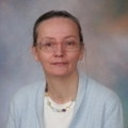Subependymal giant cell astrocytoma in a genetically negative tuberous sclerosis complex adult: Case report.
الكلمات الدالة
نبذة مختصرة
BACKGROUND
The well-described entity of Subependymal Giant Cell Astrocytoma (SEGA) in the setting of Tuberous Sclerosis Complex (TSC) is profound in current literature. It has been described in children as well as adults with or without identifiable clinical presentations of tuberous sclerosis. To our knowledge there has not been any report of a negative genetic workup of Tuberous Sclerosis Complex in an adult patient presenting with an isolated SEGA.
METHODS
We present a case of a 25-year-old female with no medical history who presented to the emergency room for headaches. Further workup included gadolinium enhanced MRI of the brain which revealed a homogenously enhancing mass in the left lateral ventricle with eccentric calcification and resultant obstructive hydrocephalus. A left frontal craniotomy with an interhemispheric transcallosal approach was taken for complete removal of the mass.
CONCLUSIONS
Final pathological diagnosis was SEGA with suggestive cell population, positive GFAP and positive synaptophysin. Genetic testing included TSC1 (MLPA, DNA Sequencing) and TSC2 (MLPA, DNA Sequencing), which were all negative. The panel did not identify mutations associated with Tuberous Sclerosis.
CONCLUSIONS
Rare cases of isolated SEGA have been reported in patients who do not have typical features of tuberous sclerosis, and may represent minimal penetrance of the disease with an attenuated phenotype. Negative genetic testing, as demonstrated, can be seen in adults with isolated SEGA. With a negative genetic workup of TSC, regular follow up may still be necessary; however this may prove to be low yield for identifying any TSC features in the future.


